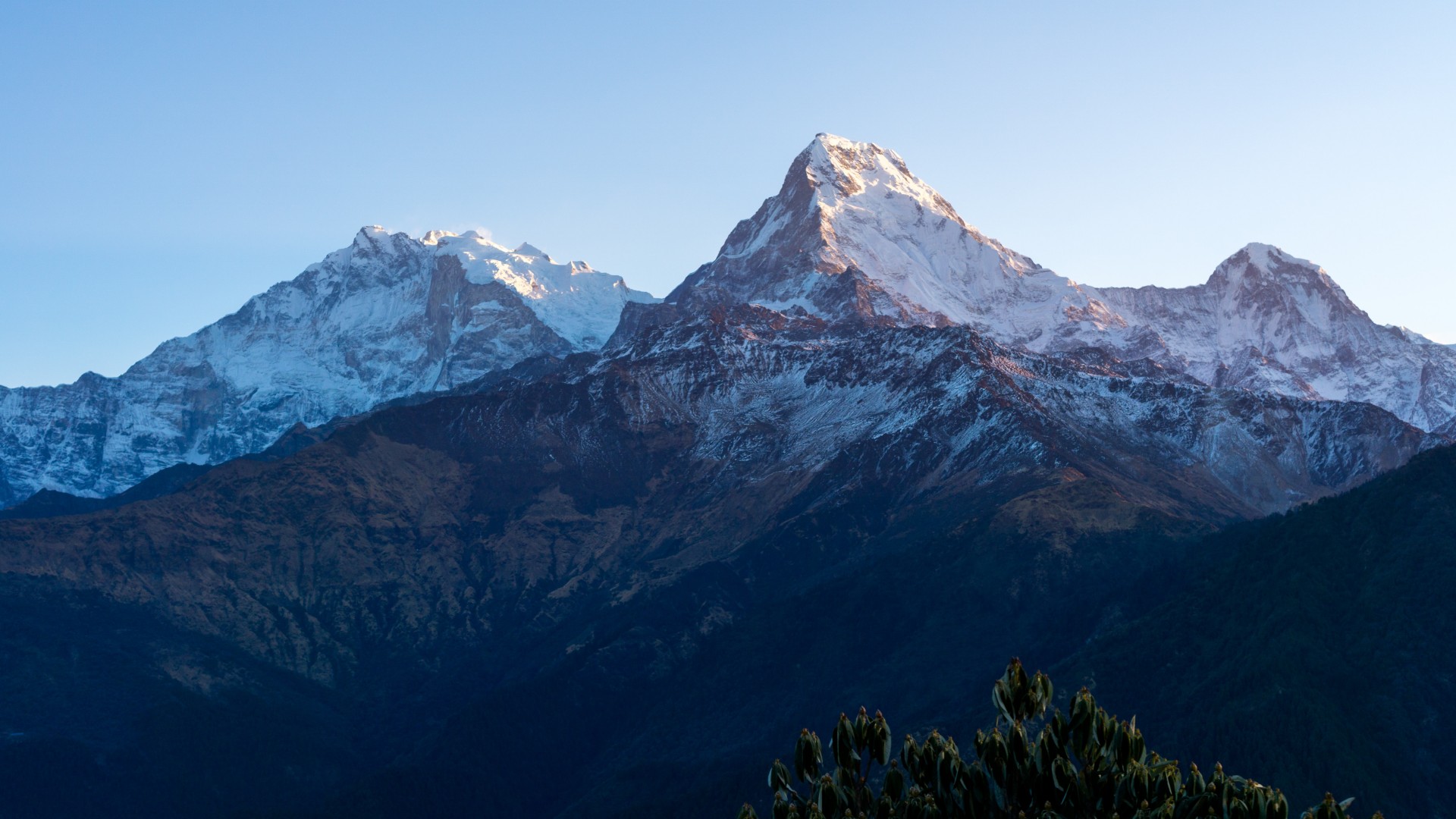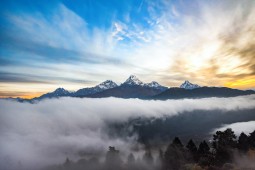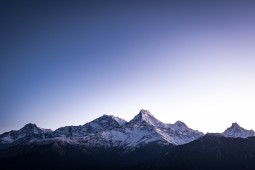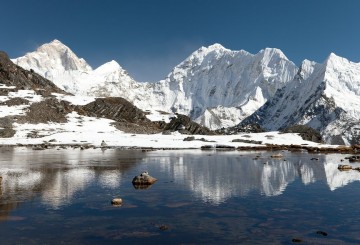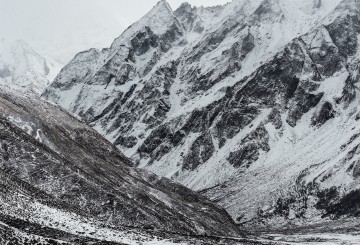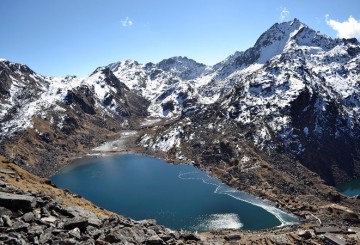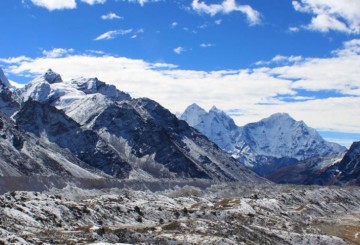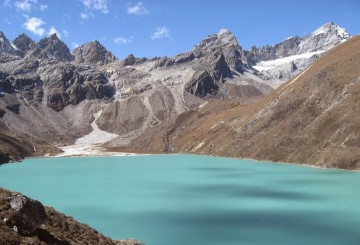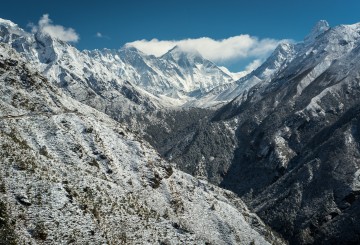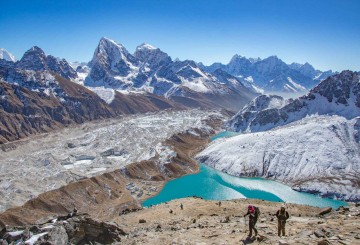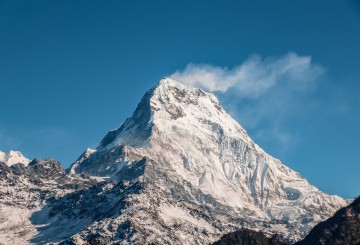Upon your arrival, our representative from Himalayan Sherpa Adventure awaits you at the airport. We will then proceed towards your hotel and brief you about Nepal and your trek. In the evening, we take you to a traditional Nepali restaurant for dinner where we will give you more information about the trek, your city sightseeing and also answer any questions you may have. Overnight in Hotel Mulberry. (B, D)

This area, north of Pokhara “Ghorepani” offers some of the most dramatic close-up views of the highest and most beautiful mountains in the world. The abrupt variation in altitude found here is astonishing. Best time to travel: You can travel to Kathmandu at any time of the year and any season. However, monsoon season– usually June to August– has approximately 80% of rainfall. Spring (March - May) and Fall (September- November) are the recommended seasons to travel due to its pleasantweather. Winter season (December - February) is also recommended if you would like to experience the best season for trekking and exploring the Himalayas.
This area, north of Pokhara “Ghorepani” offers some of the most dramatic close-up views of the highest and most beautiful mountains in the world. The abrupt variation in altitude found here is astonishing. From the Pokhara airstrip (850m) the summit of Machhapuchre (6997m) is less than 20 miles away, with no obstructing ranges to spoil the beautiful view. In fact the views in the whole area is fabulous. The Poonhill , from where we can have a wonderful glance of the mid-western lined mountains such as Annapurna south 7,219 m , Machhapuchare 6,993 m , Himchuli , Annapurna III, Dhampus peak ,Dhaulagiri II and many other tall peaks provides incredible latitudinal range, unusual geography and a pleasant climate make trekking in this area a real naturalist’s dream. The return trail follows one of the most important trading routes between India and Tibet. This is also a major pilgrimage route. We meet traders and both Hindu and Buddhist pilgrims during the trek. The Magars,Gurungs and Poons (backbone of the famous Gurkha regiments) are main inhabitants of this region.Also,you can visit the Gurung museum , monastery located in Ghandruk which gives you proper insight of the Gurung community . Along with the scenic beauty , you can get to experience the floral beauty throughout the treks .Especially in spring season you can get to view the wild ranges of rhododendron and other flowers which makes every step worth towards the destination . Also , you can get to experience the ethnic culture of the particular groups reflected by their language, dress , food and the houses . Sunrise and sunset from poonhill is the cherry on top just like the magic that your eye could not believe .
-
Day 1: Arrival
-
Day 2 : Sightseeing in Kathmandu and equipment check
Our guide will check your equipment in the morning to see if everything is fine. We will then start our sightseeing tour, heading to at least 3 major attractions in Kathmandu. Our sightseeing starts in the morning and should finish around 3 pm. Some major sites are Pashupatinath, Boudhanath, Swayambhunath and Kathmandu Durbar square. You will have the rest of the day free and also a chance to do any last minute shopping before your trek. Overnight in Hotel Mulberry. (B)
-
Day 3 Drive or fly to Pokhara (free day in Pokhara)* 8 driving hrs
This is the day our journey towards our destinations starts . After breakfast we drive towards Pokhara early in the morning starting at 7 am. It takes about 7 hours drive from Kathmandu valley to Pokhara. While on drive, we pass through the hills and we also get to view beautiful mountains lying towards western region of Nepal. After arriving Pokhara, we head towards our hotel first and have some free time in the afternoon to stroll around Pokhara’s lakeside. Incase we take a flight from Kathmandu (30 mins flight), we have plenty of time to visit around the lakeside and also see the mesmerizing views of the mountains from Pokhara. Overnight in Mt Kailash Resort (B)
-
Day 4 Drive to Phedi trek to Dhampus 1800m 4 walking hrs**
After early breakfast, we head towards our destination to Phedi which takes around an hour drive from Pokhara in a private vehicle. The road to Phedi introduces us to forests and rivers . After reaching Phedi, we take a lunch break in nearby hotel. We start our trek towards Dhampus which takes around 4 hours from Phedi.We will ascend gradually through hilly land, undulating terrain and flights of stairs to reach Dhampus. We stay overnight in Dhampus. (B, D)
-
Day 5 Landrung 1650m 5 walking hrs **
Today we start our trek without any modes of transportation . After breakfast , we start our trek towards Landrung. This route passes through Deurali. We then walk through the forest then reach the small village of Tolka and Bherikharka. Passing through these villages, we again move towards our destination through thin forests and scattered villages . After reaching our destination, we get to see the beautiful village of Landrung and will stay overnight. (B, D)
-
Day 6 Ghandrung 1950m 4 walking hrs**
This day is short but a fascinating journey from Landrung to Ghandrung. We go through steep land towards the river and take an uphill trek through the scattered villages. When we finally reach Ghandrung - the largest settlement area of Gurung people, we get to see the beauty of the village and experience their unique culture . As it is in the lap of Annapurna region, major mountains like Gangapura, Machhapuchhre (Fishtail), Mount Annapurna and other snow-capped mountains can be seen from here. We stay overnight at Ghandrung and indulge ourselves in the typical Gurung culture. (B, D)
-
Day 7 Banthainte 2774m 5 walking hrs**
Today, we rise along with sunrise passing through the beautiful mountains which gives our day a good start to begin with. After breakfast , we move towards Banthainte. We cross some beautiful Rhododendron forests and then to the small tea houses covered inside the forests . We also cross the small streams flowing with pure water . Upon reaching Banthainte ,we take a well deserved rest as we have gained an elevation of 700m just today .We make sure to get proper rest for another big day ahead. Overnight at Bainthante (B,D)
-
Day 8 Ghorepani 2823m 4 walking hrs**
After breakfast , today we head out to Ghorepani . The trail begins with the descent along the rhododendron forest . As the forest ends , we are introduced to some typical scattered houses and tea houses while we ascend slowly through the tophills . Overnight at Ghorepani .(B,D)
-
Day 9 Ghorepani (Poon Hill) 2 walking hrs**
Today our journey leads us to Poon Hill, the highest point of our trek . This day is also the highlight of the trek .We start the morning early to get the best views of the Himalayan ranges from Poon Hill. From the view point, we get to see the morning light change colors as its rays passes through the Himalayas.We enjoy the sunrise in Poonhill and look out over Dhaulagiri , Annapurna and Machapuchhare. Later , we descend back to Ghorepani where will stay overnight. (B, D)
-
Day 10 Birenthanti 1040m 6 walking hrs -drive to Pokhara 3hrs*
It is the last day of trek as we descend towards Birethanti. The trail today is mostly downhill as we descend about 2000 meters. While passing through the forests, we still get to see the never fading beauty of the landscapes. After reaching Birethanti, we drive to Pokhara by private coach which takes about 3 hours. Once in Pokhara, we check in our hotel and have the rest of the day free. Overnight in Mt Kailash Resort. (B, D)
-
Day 11 Fly back to Kathmandu
Today we fly back to Kathmandu. As we reach Kathmandu in the afternoon, you have the rest of the day free. Overnight in Hotel Mulberry. (B)
-
Day 12 Free day in Kathmandu (Contingency day)
Today you have the day at your leisure. You can ask us if there is any activities that you would like to do. (B)
-
Day 13 Final Departure
We bid final farewell and drop you to the airport for final departure .(B)
What's Included ?
- All airport and hotel transfers
- 3 nights of hotel stay in Kathmandu on Bed & Breakfast basis
- Professionally trained and experienced tour guide and assistant guides
- Welcome/or Farewell Dinner
- Transportation in our private company vehicle
- Entrance permit and fees for all the Heritage sites
- All government and local taxes
What's Excluded ?
- Lunch and Dinner in Kathmandu
- Tips for guides and drivers
- Personal expenses
- Personal Insurance– travel and rescue insurance
- Airfare for international flights to and from Kathmandu
- Rescue services
- Nepalese visa fee
- Services not mentioned in the “Included” section
-
1. What is the best time to visit the Mustang region?
- Trekking in the Annapurna region is possible any time of the year. However, the most popular months for trekking are March, April, May and September, October, November, as these months are when the conditions are at their best. The spring and autumn tend to offer reasonable temperatures, clear skies, little to no rain and less chance of problematic snowfall. The average temperature around this time can range from a high around 25 degrees Celsius during the day to -15 degree Celsius at night. - December, January and February have colder temperatures and are less frequently travelled, but this should not deter you from making your trip to the Annapurna region during these months. The weather is very clear allowing you to see all the majestic mountains and most of the lodges and tea houses are open during this time. Best of all, you don’t have to deal with crowds and will have all the views to yourself!
-
2. How do you get to the Mustang region?
- The most popular and comfortable way to travel the Annapurna region is by a short 30 minutes flight from Kathmandu to Pokhara. From Pokhara, your team will drive to the starting point of the trek. - There is an alternative way to reach the Annapurna region by driving from Kathmandu 6 hours to Pokhara and then continue on to the starting point of the trek.
-
3. What is the luggage weight limit on flights to the Mustang region? Do we need to use duffle bags instead of regular luggage (with frame and roller)?
- The luggage weight limit on Annapurna flights are 15 kgs luggage and 5 kgs of hand carry (personal backpack). Before you start your trek, any unwanted luggages can be left in your hotel in Kathmandu. They will happily store it for you as you will be using the same hotel once your trek ends. - Yes, Duffle bags are better while in the trek because it can store more luggages and helps our porter to manage his load better.
-
4. Where will we be staying during our trek and what to expect from the accommodations? What kind of meals should I expect during the trek?
- We use only the best available accommodations during our treks which can include hotels, lodges and tea houses. Through our decades of experience, we have selected these places for their hygiene, amenities and client satisfaction. - During your trek the food choices might be more limited but you can always expect to find staples such as Dal Bhat, driving from Kathmandu 6 hours to Pokhara and then continue on to the starting point of the trek. 3. What is the luggage weight limit on flights to the Mustang region? Do we need to use duffle bags instead of regular luggage (with frame and roller)? - The luggage weight limit on Annapurna flights are 15 kgs luggage and 5 kgs of hand carry (personal backpack). Before you start your trek, any unwanted luggages can be left in your hotel in Kathmandu. They will happily store it for you as you will be using the same hotel once your trek ends. - Yes, Duffle bags are better while in the trek because it can store more luggages and helps our porter to manage his load better. 4. Where will we be staying during our trek and what to expect from the accommodations? What kind of meals should I expect during the trek? - We use only the best available accommodations during our treks which can include hotels, lodges and tea houses. Through our decades of experience, we have selected these places for their hygiene, amenities and client satisfaction. - During your trek the food choices might be more limited but you can always expect to find staples such as Dal Bhat, Noodles/ Chowmein, Fried rice, Sandwiches, Soups and French Fries. You can also find some vegetarian options as well. Another common popular Nepali dish is Momo (dumpling) which is very popular among the locals. Make sure to try one when you can.
-
5. Do we need to bring towel, toilet paper? Do all the hotels/ lodges on the route provide bathroom, hot shower and toiletries?
- Not all hotels/ lodges provide the items mentioned above. We recommend all our clients to bring their own toiletries, towel and toilet paper. Some lodges will provide attached bathroom with hot shower in your room while others will just provide a common bathroom. - The Annapurna region is still a remote mountain area that is mostly inaccessible by road. Hence, most of the goods and supplies in this region have to be carried by porters or mules. This makes it very difficult and expensive to provide all the facilities and please keep in mind that the higher you trek, the lesser facilities will be available.
-
6. Do we need to bring a sleeping bag and how warm will the room be?
- If you are traveling Manang region in autumn then you will most likely not need a sleeping bag but if you are visiting in winter around December and January then you will definitely want a sleeping bag with you. You will only need a sleeping bag in the higher elevation. Some lodges will give extra blankets but having your own sleeping bag is better. Your porter will put your sleeping bags in the duffle bags that he carries. If you don’t have a sleeping bag, you can always buy one in Kathmandu or rent through our company.
-
7. If we bring water bottle, where can we refill clean drinkable water?
- There used to be clean drinking water stations along the Manang a route but it seems that it has not been in operation for few years. We recommend to purchase a bottle mineral water and then to pour it onto your water bottle. Purchasing mineral water is very easy in the region but please know that the higher you go, so will the price of water. Also, please remember to recycle the plastic bottle or to give it to your guide or the lodge who will recycle it. It is not advisable to drink tap water. Please only use mineral bottle water or boiling water.
-
8. What about Laundry services and ATM’s along the trek route? Do they accept US dollar during the trek?
- Laundry machines are very rare in the mountains so please check with your guide for this service. Trekkers usually will not have big laundry during the trek and the little items such as socks and towels can be hand washed and later dried in the sun or by the fire. Most trekkers will only do their laundry once they are back in the capital Kathmandu where you can find plenty of Laundry services. - ATM’s are also available but only in certain places. So we urge you to use the ATM’s in Kathmandu where there are plenty and also their service fee will be comparatively less than in the mountains. - Yes they accept US dollar in the mountains but you will get a better deal if you exchange it in Kathmandu in the money exchange shops.
-
9. Is Internet/ Phone available up in the mountains? How do I charge my electronics?
- Internet is available but you will need to purchase it from the lodges. If you have bought a Nepali sim card then depending on the subscription, you can also get mobile data services but this is not a guarantee in all areas of the mountain. If your trek is above 4,000 meters high, we will send a company satellite phone along with the guide just in case of an emergency. - We recommend that our clients bring a power bank with them as electricity is limited especially at higher altitudes. We also found out through some of our clients that the solar powered power bank works well during the trek. So we recommend having both or at least a power bank. Some lodges will provide free electricity for you to charge your power bank and in higher altitudes you may have to pay to charge your electronics. - Tip: Batteries will lose their charge fast in colder temperatures. So we recommend tucking your electronics in your blanket/ sleeping bag or you might find your phone/ camera dead in the morning.
-
10. How common is Altitude Sickness? What to do if I get one?
- While trekking in the Himalayas, there is always a chance of dealing with Altitude sickness, but there are many things that you can do to minimize the risks. Our itinerary programs are carefully designed to ascend slowly and to provide proper acclimatization activities. Our experienced guides will remind you to stay hydrated and also look out for any early signs of distress. - Our guides receive training every year on Altitude sickness. If they think that you are showing symptoms of Altitude sickness, they might perform some simple diagnostic tests such as checking your oxygen level or asking you to walk in a straight line. The most effective treatment for altitude sickness is to descend to a lower elevation. However, in severe cases or certain conditions where descending is not possible our guides will coordinate an air evacuation as soon as possible. - Note: All of our guides are trained to administer oxygen. Every trek that goes above 4,000 meters will be equipped with an oxygen cylinder and a satellite phone incases of an emergency.
-
11. Do we need to carry travel insurance?
- Yes, travel insurance is mandatory while trekking with us. Please ensure that your insurance covers air evacuation service. While trekking to the Himalayas, there is a risk of dealing with an altitude sickness. In case of such emergencies, your air evacuation insurance will help you cover the cost or else the trekker will have to solely bear the costs. Our treks are organized in a very thoughtful manner so you will not have to face such adversities, but we always want our guests to travel in a peace of mind.
-
12. Do I need guide and porters for my trek?
- Yes, having a trekking guide and porter is necessary part of your journey. We have our team of guides and porters who work with us every season. Guides and Porters are an integral part of what we do so they are a vital team member. All of our guides are trained every year on leadership skills and basic first aid skills. Our porters are treated fair by limiting the weight they carry and paying well for the job they do. Trekking in high altitude requires good support team and it is very important to have trekking guide and porter along with you. We treat our porters fairly by only allowing 24 kgs of maximum load and limit per trekker a maximum of 12 kgs (26 lbs) to be carried. 1 porter can carry the load of 2 clients.
-
13. Do I have to tip my guide/ porter?
- Tipping culture is not mandatory but highly appreciated. Please keep in mind that our guides/porters will not ask you for anything– including tips. However, if you think that they have performed well while doing their job, and earn your appreciation or a "thank you", you may by all means tip them any amount you find reasonable. Typical guidelines on tipping the guides are $5 - $10 per day and for porters $3 - $5 per day. Most clients often leave tips in the last night of their trek.
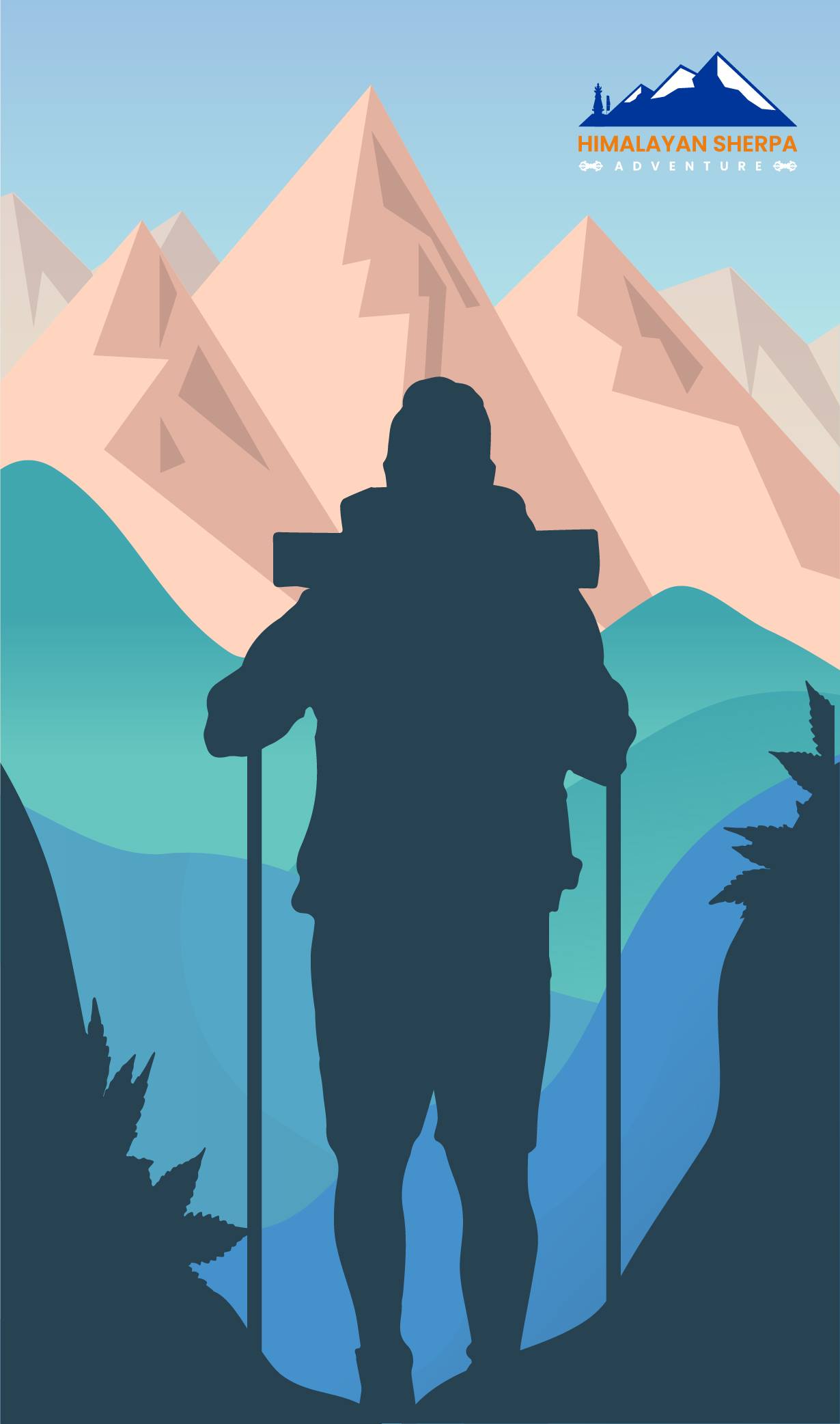

You May Also Like

